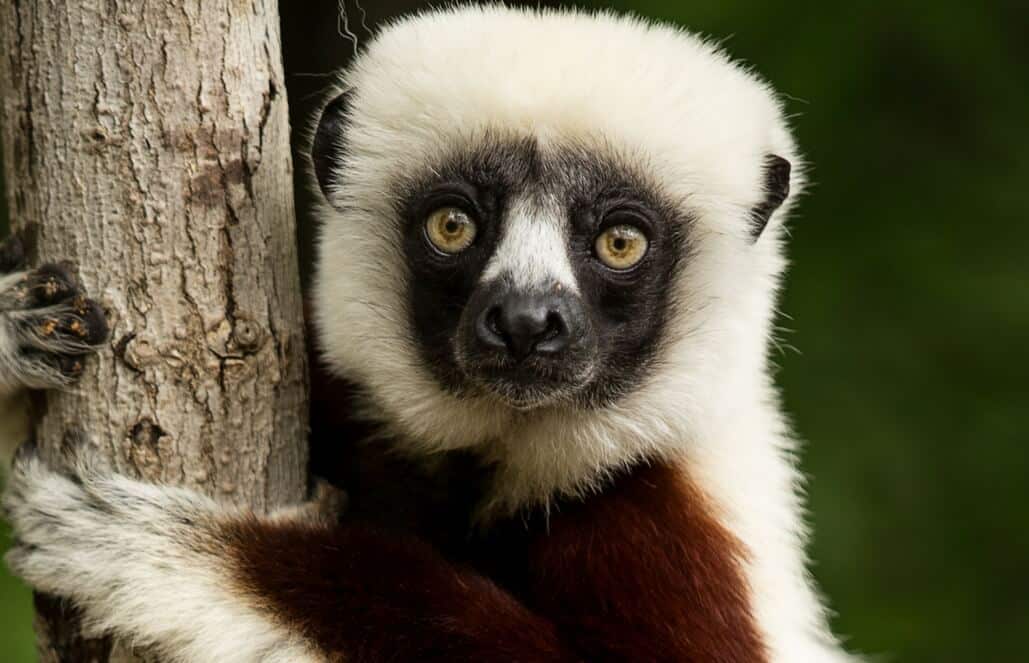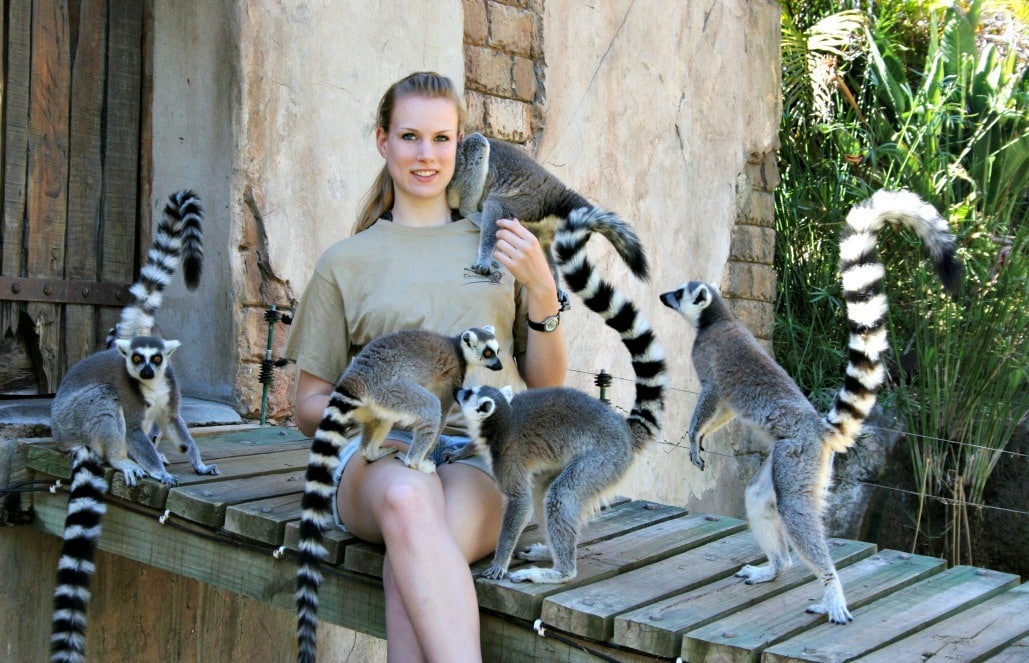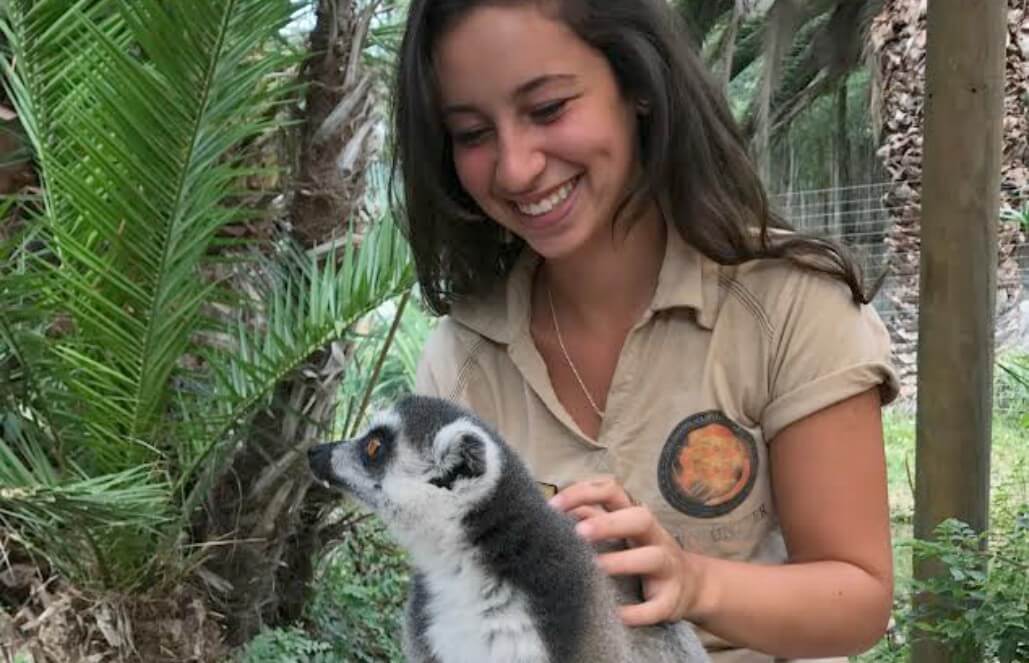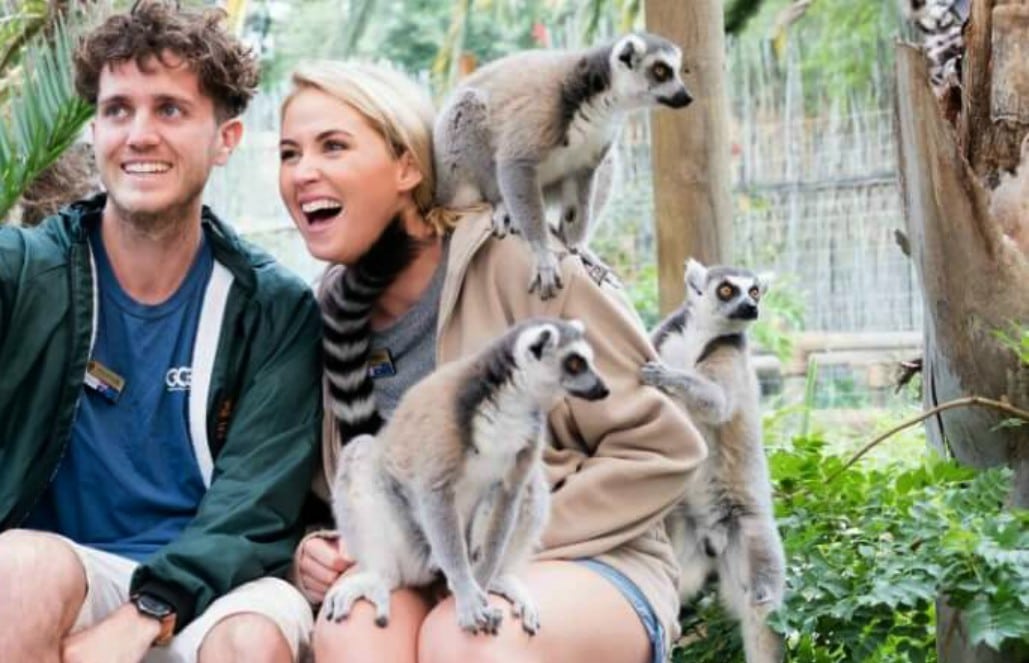If your only source of information about Madagascar is from the 2005 DreamWorks Animation, then you probably already know that the island is host to cheeky primates called lemurs that spend their day dancing and scavenging for fruit. Yet the story of the lemur is a lot more intriguing and important than you might expect; with its links to human history, the spectacular uniqueness of its habitat and significance to the African rainforest being some of the top reasons to join the Lemur Conservation Project in Madagascar on your next volunteer trip abroad.
Lemur-like animals were the world’s oldest primates, roaming Africa along with the dinosaurs some 70 million years ago. Using rafts of floating vegetation, they made their way across the Indian Ocean to the island of Madagascar and soon evolved to become the most varied group of primates on Earth.
Although today most lemurs can comfortably settle themselves on your shoulder (sure to be a highlight of your trip!), some of their ancestors are said to have grown to be the size of gorillas. After human arrival to the island, the huge lemurs became extinct, however the East African country still boasts over 100 species of lemurs, all of which are endemic to Madagascar.
Spot the Lemur
See if you can pick these guys out on your next African adventure:
The black and white ‘ring tailed lemur’, the maki catta (or King Julien XIII from the Madagascar movies) is the most popular species and is recognized by its purring, which is similar to the household cat, hence the name ‘catta’.
The ‘sifaka’ is the dancing lemur that you will see leaping sideways, with a thick black and white coat and a tail longer than its body. This is also the guy that’s likely to be stealing your lunch whilst catching a ride on your shoulder.
The ‘aye-aye’ lemur is one of the rarest nocturnal animals and seems to have topped a few ‘weirdest animals’ lists on the Internet. To see its bat like ears, squirrel like tail and a long finger at the ready for digging up food, is a good reason to venture into the Malagasy forests and see them in their natural habitat.
Why Do They Need Me?
So why should you become a wildlife volunteer and go on a volunteer trip of a lifetime? By volunteering with animals abroad, you not only get to spend time with lovable furry creatures, but you also directly encourage the growth of the forests in Madagascar. Being a lover of fruit and a keen traveler, the lemur creates a natural fertilizer through it’s droppings by spreading the seeds of the fruits that it has eaten, thus allowing for the forest’ flora to flourish and its animals to be fed.
As the world’s most endangered group of mammals, by volunteering in this wildlife project, you will also have a direct hand in creating a better future for the threatened animals, as well as directly boosting the economy of one of the world’s poorest countries.
Ecotourism is said to be the top way to ensure the survival of the lemurs as increased government funding in promoting the island, and the potential of two million annual visitors by 2020, is showing the local Malagasy people the importance of protecting these beautiful creatures, as well as bringing in millions of dollars for the economy. Unfortunately, without programs such as the Lemur Conservation in Madagascar, the lemurs are in danger of being hunted or illegally taken as pets and abused, as their natural habitat continues to be destroyed.
How Can I Help?
A volunteer vacation with GoEco will give you the opportunity to spend time with these endangered animals by doing tasks such as preparing their food, planting trees that will become their food source and caring for young lemurs, amongst other projects. With only four hours of volunteer work per day, you will also have plenty of energy to explore Madagascar’s unglejs, waterfalls, desert and caves, that are home to 75% of fauna and flora which is unique to the island. The 4,800 km of coast is also sure to provide you with beach time in the crystal clear African waters.
As a rescue animal volunteer, you will be treated with a week-long orientation where you will meet other like minded volunteers, be introduced and practice the national language of Malagasy (the other main language is French) and participate in a yoga and relaxation session. You will also be able to visit the surrounding villages as well as experience the rich culture and cuisine of the Malagasy people.
A second and third project in Africa working to rehabilitate lemurs are the African Wildlife Ranch project and African Wildlfie Rachh Pre-Vet Internship offered in South Africa.
Volunteering in Africa is sure to be a rewarding experience no matter which program you choose to do. One of the most important features of being a volunteer abroad is the education that you are able to provide to locals about serious environmental factors as well as the life lessons that you will learn from interacting with a foreign culture and living in a unique environment. The selfless service that you are able to offer through GoEco’s Lemur Conservation Project in Madagascar and the African Wildlife Ranch is sure to make a wonderful impact on your life as well as those that you meet.














